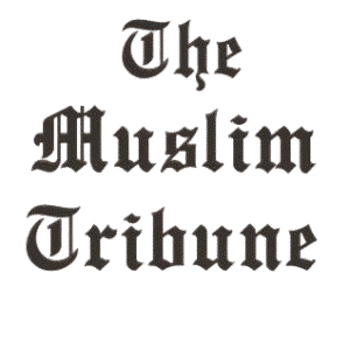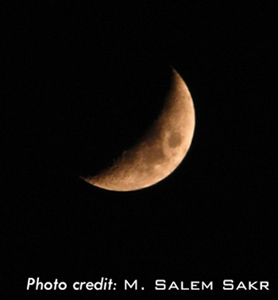The first urban element introduced by the Prophet (PBUH) to the city of Madinah was the mosque institution which functioned as a community development center. While in Makkah, the Prophet (pbuh) and his followers were denied the existence and free utilization of their mosques, although they were in dire need of them.
Here I shall discuss the significance of the Prophet’s mosque in Madinah as a community center. The paper is divided into the following sections: 1) The introduction of the Prophet’s mosque in Madinah; 2) The main roles and functions of the Prophet’s mosque; 3) The Prophet’s mosqueas a centre for religious activities; 4) The Prophet’s mosqueas a learning centre; 5) The Prophet’s mosqueas the seat of the Prophet’s government; 6) The Prophet’s mosqueas a welfare and charity centre; 7) The Prophet’s mosqueas a detention and rehabilitation centre; 8) The Prophet’s mosqueas a place for medical treatment and nursing; 9) The Prophet’s mosqueas a place for some leisure activities.
The first urban element introduced by the Prophet (PBUH) to the city of Madinah was the mosque institution which functioned as a community development center. While in Makkah, the Prophet (pbuh) and his followers were denied the existence and free utilization of their mosques, although they were in dire need of them. As a result, they were denied a free and proper practice of their new Islamic faith. They were thus denied some of their basic human rights. They were denied the freedom of thought, expression and practice of their beliefs. However, in order to offset partially this deficiency in Makkah, the first Muslims were utilizing some Muslim houses, or some quiet, secret and safe spots mainly on the outskirts of Makkah, to serve the purpose on an interim basis. They even got accustomed to going and visiting the Ka’bah or the al-Masjid al-Haram, albeit without openly and freely performing their religious rituals there. The al-Masjid al-Haram was then controlled by polytheists and polytheistic ideas and customs, both from inside the city of Makkah and from abroad. This way, as much as symbolically only could the al-Masjid al-Haram function as the mosque, as well as the nucleus, in the lives of the early believing Muslim community. Such a state of affairs continued for about 13 years following which Allah brought about a change and granted the Muslims and their Prophet (pbuh) that which they had been yearning for. They managed to migrate to Madinah where all the necessary conditions for establishing a well-structured, thriving, free and autonomous state existed.
To what extent the mosque institution was desirable both to propel the struggle for the Islamic cause to a higher level, and to spur and facilitate the overall progress of the Muslims and their young community, testifies the following event. On the way from Makkah to Madinah, the Prophet (pbuh) rested four, or fourteen, or eighteen, or twenty two days[1] in Quba’ — a suburb of Madinah about two to three miles to the southeast of the city – whence he next proceeded to his final destination, the city of Madinah proper. Even though his stay in Quba’ accounted for a short interval under some totally new circumstances which everyone was craving for, the Prophet (pbuh) succeeded in establishing a mosque there, “the Mosque of Piety”, to which he later during his subsequent stay in Madinah frequently came, riding or walking. The Prophet (pbuh) is said to have first positioned a stone on the mosque’s qiblah side (the qiblah then was towards the al-Masjid al-Aqsa) followed by Abu Bakr, who positioned another stone. Next, the people started building.
The Quba’ mosque was the first mosque built by the Prophet (pbuh). Thus, it occupies a special place in the Islamic tradition. The Prophet (pbuh) once said: “He who purifies himself at home and then proceeds to the Quba’ mosque for a prayer will procure the reward of the ‘umrah (the lesser pilgrimage).”[2] Certainly, it was because of this that the Qur’an referred to the Quba’ mosque as “the Mosque of Piety”. The Prophet (pbuh) loved to go and visit it.
That building and making the most of mosques was a matter of great urgency to the Prophet (pbuh) has been highlighted once again prior to the Prophet’s arrival into the city of Madinah proper. It was Friday when the Prophet (pbuh) set off from Quba’ to Madinah. On the way, before he arrived, the time for the Jumu’ah Prayer drew near. Being used to offering prayers wherever their appointed times overtook him, even if he happened to be in a sheepfold, the Prophet (pbuh) performed the Jumu’ah Prayer with the tribe of Banu Salim b. ‘Uwq because he happened to pass right through their quarter at the time of the prayer. They prayed most probably at a plain that functioned as a makeshift mosque of the Banu Salim b. ‘Uwq tribe. That was the Prophet’s first Jumu’ah Prayer in Madinah. The number of worshipers was about one hundred; some estimated that it was about forty.
PART 1-
BY: Dr. Spahic Omer
Assoc. Prof. – College of Architecture and Environmental Design- International Islamic University Malaysia
Posted on: April 30, 2011
[1] See: Ibn Kathir, al-Bidayah wa al-Nihayah, (Beirut: Dar al-Kutub al-‘Ilmiyyah, 1985), vol. 3 p. 196.
[2] Ibn Majah, Sunan Ibn Majah, Kitab Iqamah al-Salah wa al-Sunnah fiha, Hadith No. 1402.


